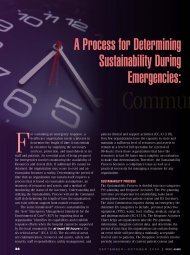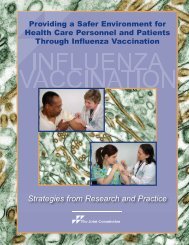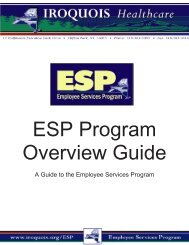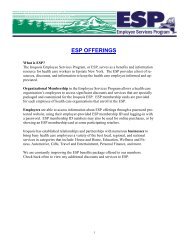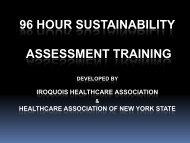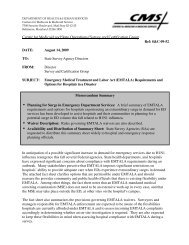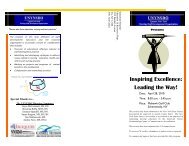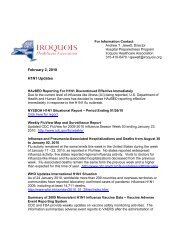NYS Public Health Legal Manual: A Guide for Judges, Attorneys ...
NYS Public Health Legal Manual: A Guide for Judges, Attorneys ...
NYS Public Health Legal Manual: A Guide for Judges, Attorneys ...
Create successful ePaper yourself
Turn your PDF publications into a flip-book with our unique Google optimized e-Paper software.
NEW YORK STATE PUBLIC HEALTH LEGAL MANUAL § 1.101<br />
Commentary<br />
Among the most critical, and most sensitive, decisions that have to<br />
be made by medical professionals in response to public health disasters<br />
is how to allocate scarce resources to vulnerable populations.<br />
Epidemics—or biological, chemical or radiological disasters—<br />
could put overwhelming demands on the need <strong>for</strong> medicines, vaccines,<br />
medical devices (such as ventilators), and hospital facilities.<br />
There are no statutes or rules directly addressing which vulnerable<br />
persons should get priority to limited health resources, although federal<br />
and state anti-discrimination laws protecting various populations<br />
(e.g., the elderly and the disabled) could constrain government<br />
actions that would otherwise have a discriminatory impact.<br />
<strong>Health</strong> care providers there<strong>for</strong>e need to work within an ethical<br />
framework that balances the duty to care <strong>for</strong> patients with the duty to<br />
use scarce resources wisely. In serious health emergencies, this most<br />
likely would involve a triage system that balances the obligation to<br />
save the greatest number of lives against the obligation to care <strong>for</strong><br />
each single patient. See 42 U.S.C. § 1395dd; 42 CFR § 489.24(1)<br />
[hospitals that have emergency departments have obligation to provide<br />
a medical screening examination and stabilizing treatment to<br />
every patient who arrives <strong>for</strong> care]. Such a system would generally<br />
be based on clinical evaluations of which persons would have the<br />
best chance to survive given the resources available. The specific<br />
criteria <strong>for</strong> making such grim decisions remain a source of active<br />
debate in the health care community. The State Department of<br />
<strong>Health</strong>, in coordination with the New York Task Force on Life and<br />
the Law, and the Federal Centers <strong>for</strong> Disease Control and Prevention<br />
(CDC) have issued plans <strong>for</strong> allocation of scarce resources in specific<br />
situations (see State plan <strong>for</strong> allocation of ventilators in an<br />
influenza pandemic, available at http://www.nyhealth.gov/; CDC<br />
prioritization of H1N1 vaccine recipients in 2009, available at http://<br />
www.cdc.gov/) but, absent such prioritization, health care providers<br />
are not required to institute any specific allocation protocols. Failure<br />
to comply with any existing state and federal requirements and<br />
guidelines could carry severe consequences, including loss of government<br />
funding.<br />
55




